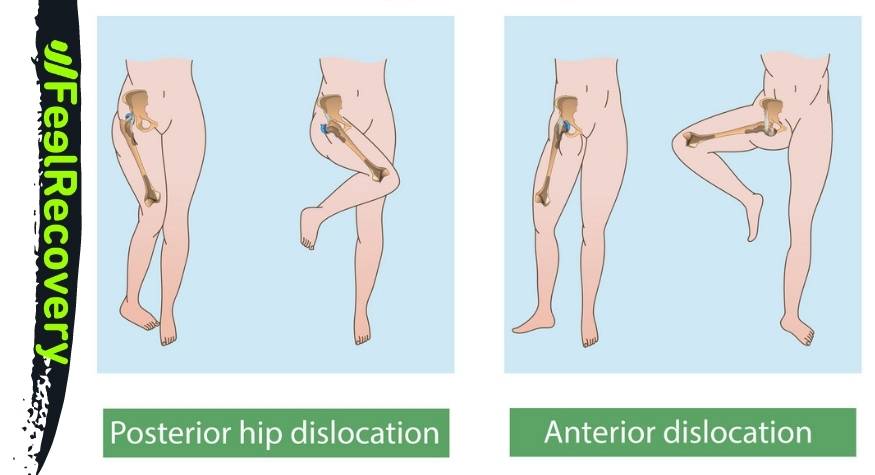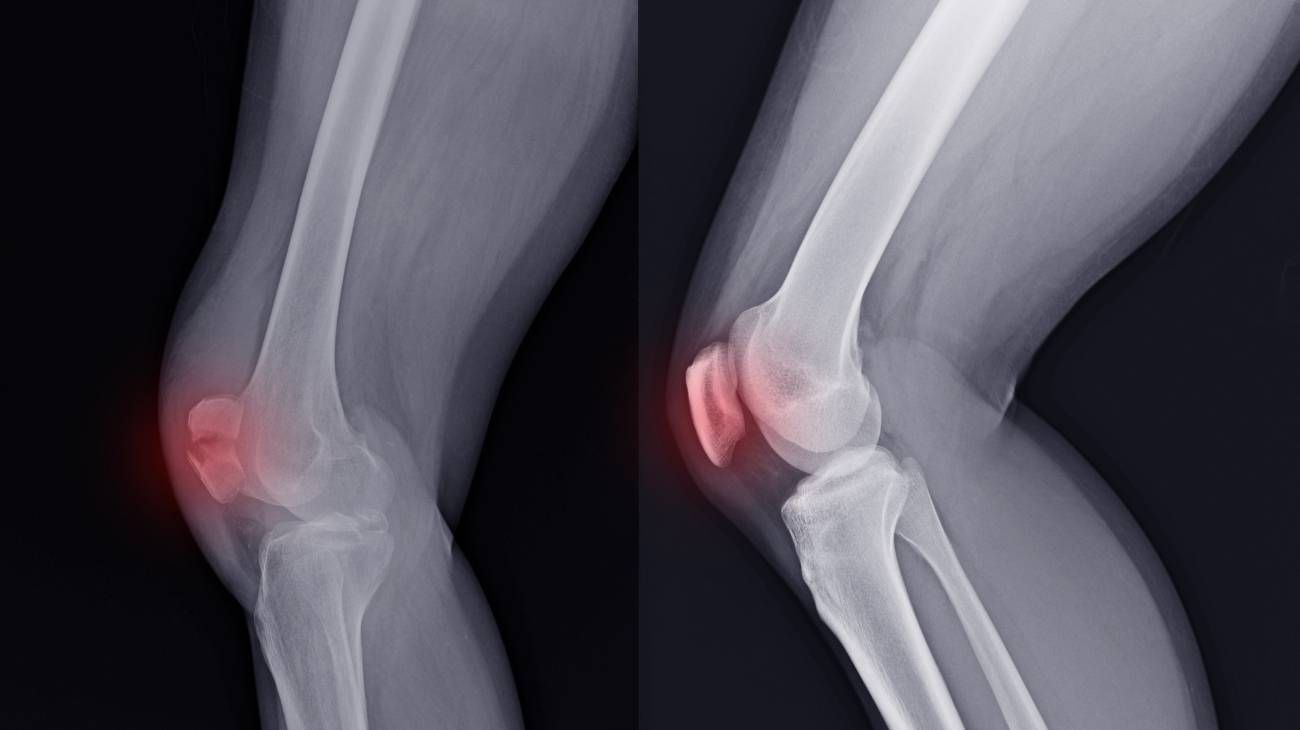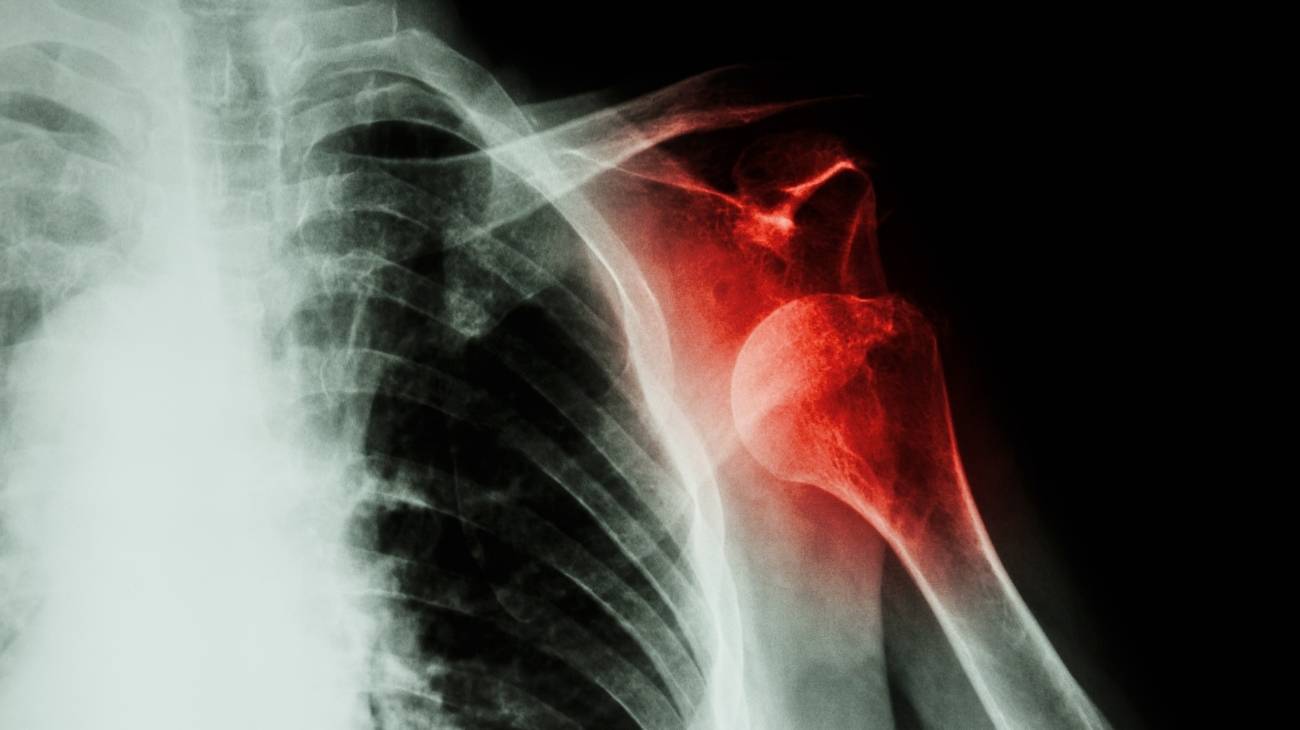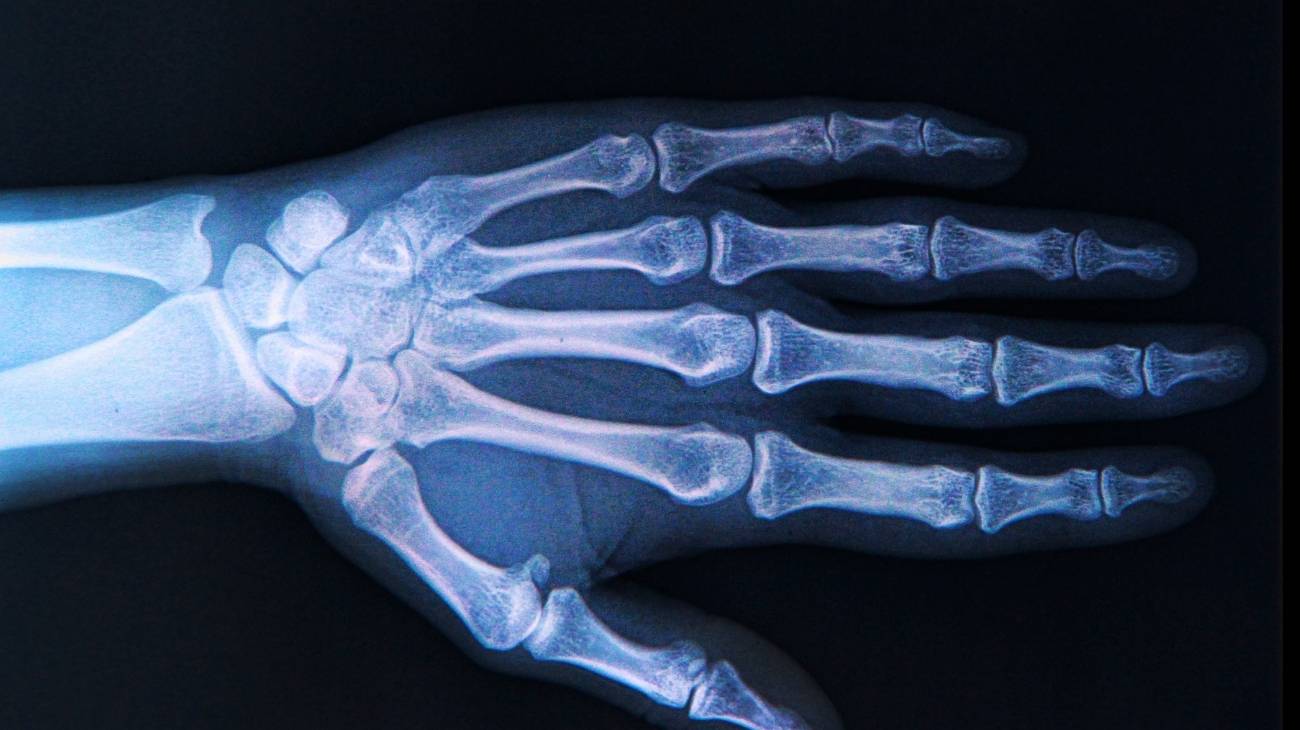- What is hip joint dislocation?
- What are the causes and risk factors for hip dislocation?
- Best products for hip dislocation
- Main signs and symptoms that warn us that we have a hip dislocation
- What are the first aid measures for hip dislocation?
- What are the most effective prevention methods for hip joint dislocation?
A dislocated hip joint causes severe pain and stiffness. This is due to the coxofemoral separation caused by a blow, wear and tear of the cartilage and other causes that you can read about below.
Keep in mind that hip dislocation must be treated in time, so it is important to know what the symptoms of this trauma are. If you want to know more about what a hip subluxation is and how to practice first aid for a slip between the coccyx and the femur, we invite you to continue reading.
What is hip joint dislocation?
The coccyx-femoral joint is the space that allows leg movements thanks to the union of the femoral head with the acetabulum of the pelvis. These two bones are joined by cartilage and a series of ligaments, which can cut or move, causing the coccyx to separate from the femur.
This slippage in the joint cavity of the two bony tissues is known as hip dislocation. This condition usually represents different degrees, as the separation of the joint can be partial or total. The recovery time will depend on this, which can be around 3 to 10 weeks, but if there is a surgical intervention the joint will be reduced in a longer time, reaching up to 10 to 12 months.
What are the causes and risk factors for hip dislocation?
There are different factors that can cause a dislocation in the hip, see below which are the most recurrent:
- Congenital factors: Hip dysplasia and bone malformation are some reasons why a person may be born with a hip dislocation.
- Previous surgical interventions: Arthroplasty and other surgeries can lead to dislocation lesions in the hip joint.
- Trauma: One of the main causes that can lead to hip dislocation are traffic accidents, domestic falls and blows received in sporting activities.
- Age of the patient: As the age of the trauma patient advances, the strength of the muscles and ligaments decreases, which increases the likelihood of dislocation.
- Excessive weight: Excessive body weight and heavy lifting often lead to displacement of the coxofemoral bones.
- Incorrect posture: Performing high-impact work or sports without taking into account the normal biomechanical movements of the coxofemoral joint can lead to hip dislocation.
- Poor nutrition: Excess uric acid caused by eating high-fat foods leads to microcrystals in the synovial sac, leading to overbones that work as a lever to separate the coccyx from the femur.
Best products for hip dislocation
Bestseller
-
Acupressure Mat and Pillow (Black/Gray)
$49.95 -
Acupressure Mat and Pillow (Green/Navy)
$49.95 -
Acupressure Mat and Pillow (Pink/Bordeaux)
$49.95 -
Acupressure Pillow (Black/Gray)
$29.46 -
Acupressure Pillow (Green/Navy)
$29.46 -
Acupressure Pillow (Pink/Bordeaux)
$29.46 -
Back Support Belt (Black)
$34.95 -
Back Support Belt (Green)
$34.95 -
Back Support Belt (Pink)
$34.95 -
Heating Pad for Microwave Classic Bottle Shaped (Hearts)
$19.95 -
Heating Pad for Microwave Classic Bottle Shaped (Oxford)
$19.95 -
Heating Pad for Microwave Classic Bottle Shaped (Sport)
$19.95 -
High Density Foam Roller for Muscle (Black/Gray)
$29.95 -
High Density Foam Roller for Muscle (Green/Navy)
$29.95 -
High Density Foam Roller for Muscle (Pink/Bordeaux)
$29.95 -
Ice Massage Roller Ball (Black)
$39.95 -
Ice Massage Roller Ball (Green)
$39.95 -
Ice Massage Roller Ball (Pink)
$39.95 -
Microwave Heating Pad for Back Pain Relief (Extra Large) (Hearts)
$29.95 -
Microwave Heating Pad for Back Pain Relief (Extra Large) (Oxford)
$29.95 -
Microwave Heating Pad for Back Pain Relief (Extra Large) (Sport)
$29.95 -
Microwave Heating Pad for Neck & Shoulder Pain Relief (Hearts)
$24.95 -
Microwave Heating Pad for Neck & Shoulder Pain Relief (Oxford)
$24.95 -
Microwave Heating Pad for Neck & Shoulder Pain Relief (Sport)
$24.95 -
Microwaveable Heating Pad for Pain Relief (Hearts)
$19.95 -
Microwaveable Heating Pad for Pain Relief (Oxford)
$19.95 -
Microwaveable Heating Pad for Pain Relief (Sport)
$19.95 -
Pack 2 In 1 Foam Roller High + Soft Density (Black/Gray)
$29.95 -
Pack 2 In 1 Foam Roller High + Soft Density (Green/Navy)
$29.95 -
Pack 2 In 1 Foam Roller High + Soft Density (Pink/Bordeaux)
$29.95 -
Sacroiliac Support Belt (Black)
$24.95 -
Sacroiliac Support Belt (Green)
$24.95 -
Sacroiliac Support Belt (Pink)
$24.95 -
Soft Density Foam Roller for Recovery (Black)
$29.95 -
Soft Density Foam Roller for Recovery (Green)
$29.95 -
Soft Density Foam Roller for Recovery (Pink)
$29.95 -
Trigger Point Massage Stick (Black)
$14.95 -
Trigger Point Massage Stick (Green)
$14.95 -
Trigger Point Massage Stick (Pink)
$14.95
Main signs and symptoms that warn us that we have a hip dislocation
Youcan tell if you have a dislocated hip if you have the following symptoms:
- Difficulty in moving the leg: This is mainly due to the lack of complete connection between the acetabulum of the pelvis and the femoral head.
- Reduced mobility: Problems with flexion, rotation and extension of the hip. As with the leg, the trunk part of the human trunk is also affected when there is a displacement at the hip joint.
- Pain: This symptom can appear in the lower back, in the gluteal area, in the quadriceps and even in the feet. This is generated by the sensitivity produced in the nerve roots in this part of the body.
- Discomfort when walking: If pain is felt or there is an inability to support the foot, it is likely that there is a hip dislocation.
- Uneven iliac crests: If both sides of the pelvis are compared, it is common to find, in the case of a dislocation, that one end of this bone is higher than the other.
- Creaking sounds: In some trauma patients, it is possible to hear creaking sounds when making leg extension and inflexion movements.
- Lack of symmetry in the legs: The shortening of one leg occurs when there is a displacement of the coxofemoral joint.
- Absence of sensitivity: paraesthesia and tingling sensation appear in the foot, calf and gluteal area when there is this type of injury.
- Inflammation: In some patients it is not possible to find this symptom with the naked eye, but it is a common feature of this ailment.
What are the first aid measures for hip dislocation?
It is important to bear in mind that a dislocated hip should not be treated acutely, as in this case professional intervention is recommended. First aid can be applied to a dislocated hip using the PRICE therapy, the steps of which are as follows:
- Protection: The first thing to do is to prevent the trauma from worsening, so it is important to stop the activity that caused the injury. At the same time, if necessary, splints should be used to prevent further displacement of the bones.
- Rest: This step consists of placing the patient on a flat, clean surface and performing an ocular inspection to find other trauma that may increase the severity. The person should not engage in any activity at this stage.
- Application of cold: Cold should be applied directly to stimulate the anti-inflammatory analgesic effect. This will help to know the injury better with the naked eye. You can apply ice packs or choose some much more practical products, such as ice gel packs.
- Use of compressive clothing: At this stage it is necessary to fix the hip joint to prevent further loosening of the bones. This helps to improve circulation and prevent oedema. Elastic bandages, compression thigh braces, sacroiliac supports or a hip belt can be chosen for this step.
- Elevation: This is the last part of this first aid protocol and consists of keeping the affected area below the level of the heart to prevent the formation of clots that can lead to thrombosis and other diseases. It also lowers the blood pressure in the area and reduces inflammation.
In a medical setting and performed by a specialist, there is the so-called Captain Morgan technique to reposition the hip joint into place, although it is a very painful manoeuvre for the patient, it is highly effective for hip dislocation injuries.
What are the most effective prevention methods for hip joint dislocation?
To avoid hip joint dislocation you need to consider these things that will help with prevention:
- Rest: Try to get 7 to 8 hours of sleep, as the usual extended and relaxed night's rest allows the muscles and tendons to get enough rest. This will help prevent hip dislocation.
- Avoid repetitive activities: People who play sports or repetitive jobs in which you need to flex, extend or rotate the hip are more likely to suffer from hip dislocation.
- Always wear protective clothing: If you are involved in sports, it is advisable to choose compression clothing to help keep the joint safe and firm. You can choose lumbar supports or sacroiliac pelvic belts to help in this task.
- Always wear comfortable shoes: Tight, slippery shoes often cause falls, which can lead to hip dislocation, and the use of ergonomic insoles can help improve your stride.
- Climb stairs with the correct biomechanical position: Body posture is very important to avoid hip trauma. For this reason, going up or down stairs with the whole sole of the foot seated and using the strength of the calf and quadriceps femoris will help you to avoid falls and possible dislocations.
- Do sporting activities: A sedentary lifestyle is a risk factor and increases the chances of dislocating the musculoskeletal structure of the hip due to the muscular weakness of the tissues in the area.
- Improve your nutrition: It is no secret that eating healthy foods and having a balanced diet in protein, carbohydrates and healthy fats will make your body stronger and healthier and reduce the risk of injury. In addition, keeping in mind that proper hydration throughout the day will also be important.
- Warm-up: Healthy eating and warm-up exercises help to improve tendon and muscle bands. This strengthens the hip joint area and prevents the occurrence of trauma.
- Improve technique: Perform sports movements with the necessary techniques for each sport. It is important that you know all the methods and practice correctly every time you want to perform a particular movement.
- Go to the doctor at the slightest pain or symptom: To avoid a more serious dislocation, it is necessary to visit the doctor if you feel pain or see inflammation in the lower back and pelvis.
- Beware of traffic accidents: If you decide to travel by motorbike or bicycle, it is advisable to wear as much protection as possible to avoid heavy blows when falling from the vehicle. You can use compressive clothing for the waist and legs.
References
- Foulk, D. M., & Mullis, B. H. (2010). Hip dislocation: evaluation and management. JAAOS-Journal of the American Academy of Orthopaedic Surgeons, 18(4), 199-209. https://journals.lww.com/jaaos/Abstract/2010/04000/Hip_Dislocation__Evaluation_and_Management.3.aspx
- Sanders, S., Tejwani, N., & Egol, K. A. (2010). Traumatic Hip Dislocation. Bulletin of the NYU hospital for joint diseases, 68(2). https://pubmed.ncbi.nlm.nih.gov/20632983/
- Weinstein, S. L. (1987). Natural history of congenital hip dislocation (CDH) and hip dysplasia. Clinical Orthopaedics and Related Research®, 225, 62-76. https://journals.lww.com/clinorthop/abstract/1987/12000/natural_history_of_congenital_hip_dislocation.7.aspx
- Tornetta, P., & Mostafavi, H. R. (1997). Hip dislocation: current treatment regimens. JAAOS-Journal of the American Academy of Orthopaedic Surgeons, 5(1), 27-36. https://journals.lww.com/jaaos/Abstract/1997/01000/Hip_Dislocation__Current_Treatment_Regimens.4.aspx
- Lonstein, J. E., & Beck, K. (1986). Hip dislocation and subluxation in cerebral palsy. Journal of Pediatric Orthopaedics, 6(5), 521-526. https://journals.lww.com/pedorthopaedics/Abstract/1986/09000/Hip_Dislocation_and_Subluxation_in_Cerebral_Palsy.1.aspx
- Clegg, T. E., Roberts, C. S., Greene, J. W., & Prather, B. A. (2010). Hip dislocations—epidemiology, treatment, and outcomes. Injury, 41(4), 329-334. https://www.sciencedirect.com/science/article/abs/pii/S0020138309004392
- Khatod, M., Barber, T., Paxton, E., Namba, R., & Fithian, D. (2006). An analysis of the risk of hip dislocation with a contemporary total joint registry. Clinical Orthopaedics and Related Research®, 447, 19-23. https://journals.lww.com/clinorthop/fulltext/2006/06000/an_analysis_of_the_risk_of_hip_dislocation_with_a.4.aspx
- Gausden, E. B., Parhar, H. S., Popper, J. E., Sculco, P. K., & Rush, B. N. (2018). Risk factors for early dislocation following primary elective total hip arthroplasty. The Journal of arthroplasty, 33(5), 1567-1571. https://www.sciencedirect.com/science/article/abs/pii/S0883540317311403
- Pallia, C. S., Scott, R. E., & Chao, D. J. (2002). Traumatic hip dislocation in athletes. Current sports medicine reports, 1(6), 338-345. https://journals.lww.com/acsm-csmr/abstract/2002/12000/traumatic_hip_dislocation_in_athletes.7.aspx
- Restrepo, C., Mortazavi, S. J., Brothers, J., Parvizi, J., & Rothman, R. H. (2011). Hip dislocation: are hip precautions necessary in anterior approaches?. Clinical Orthopaedics and Related Research®, 469, 417-422. https://link.springer.com/article/10.1007/s11999-010-1668-y


































































